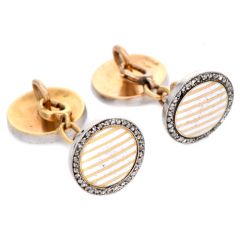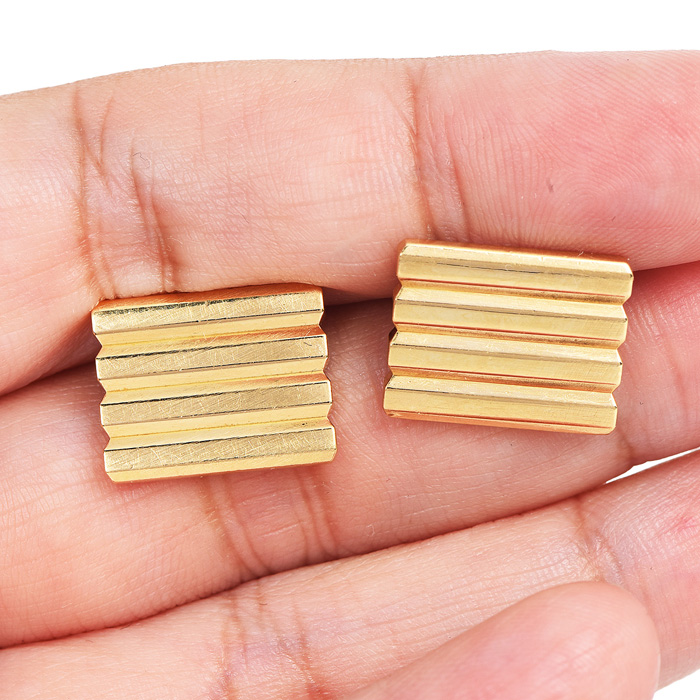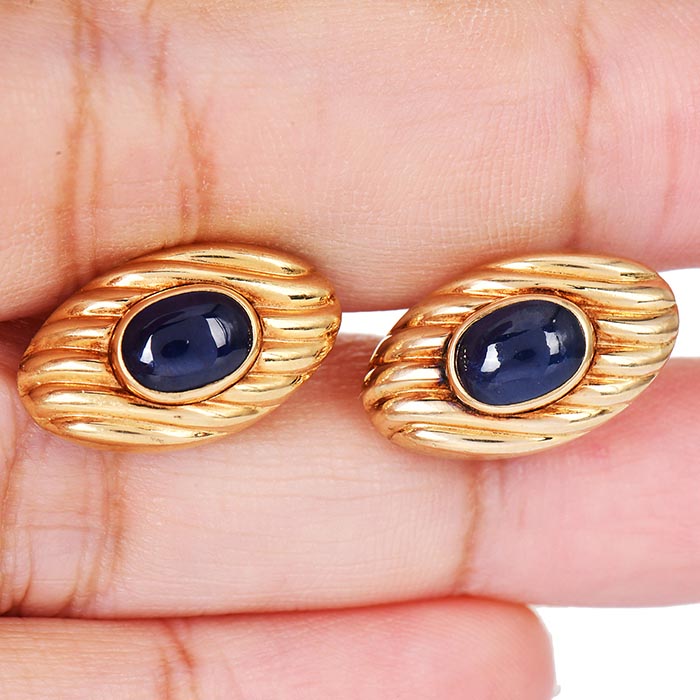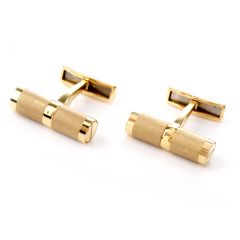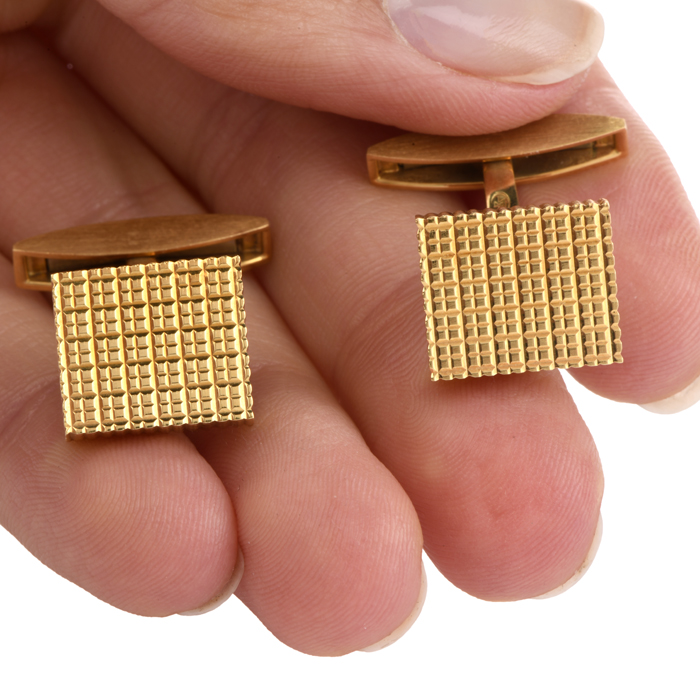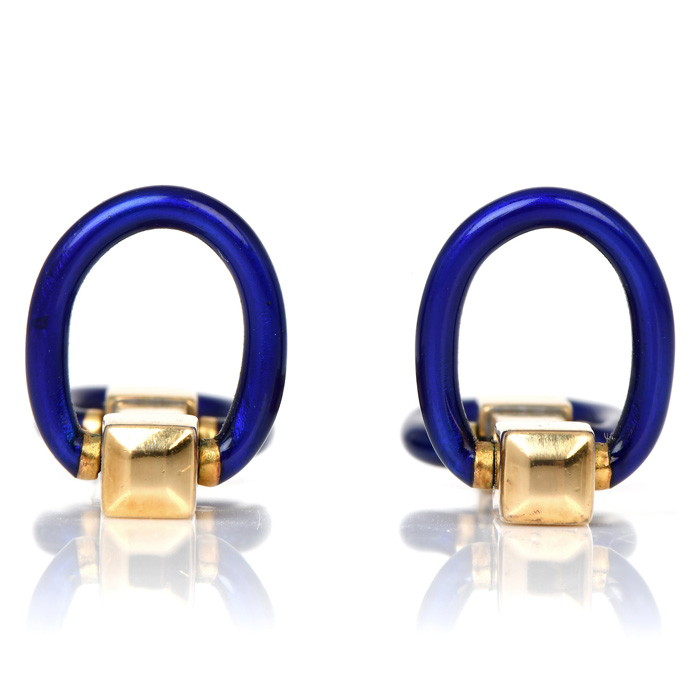Revival of an Elegant Accessory: Men's Cufflinks
Included in Dover Jewelry's collection of estate and vintage gold jewelry items and accessories are our exclusive fine jewelry cufflinks of various eras and styles. Our very elegant designer cufflinks and tuxedo sets are purchased from European and other international sources and launched on our website at competitive prices. Our cufflinks are genuine vintage pieces, purchased from estates and whenever applicable, bear the Hallmarks of their designers as well as their provenance.
Meaning and Origins of Cufflinks
The history of vintage and antique cufflinks dates back to the end of 18th century, the time at which cufflinks became known and started to be used as important accessories. and their development was related to that of men's shirt.
At first worn as a very simple garment worn without additional underwear, it was not until the Middle Ages that the visible areas of the shirt were selected as sites of decorative elements such as frills, ruffs and embroidery. The cuffs were attached together with ribbons, as were collars and frills hanging down over the wrist were worn at formal settings until the end of the 18th century. Meanwhile, the sleeves of everyday shirts were secured with a pair of buttons. At the early 19th century, men wore a highly conventional outfits consisting of a dark suit by day and a dinner jacket or tailcoat in the evening. By the middle of the 19th century the modern cufflink had replaced the earlier conventional methods and already gained popularity to the extent that most men in the middle and upper classes were wearing cuff-links.
At first handcrafted by individual jewelers, the industrial revolution made it possible to mass-produce cufflinks and to make them available in every price category.
Most of vintage men’s cufflinks of the period were rendered in dimple and discrete fashion, primarily in gold, and colored cufflinks made from gemstones were at first worn by few men with a great deal of self-confidence!, As Edward VII ,started using the colorful Fabergé cufflinks in the 19th century, those cautious of venturing vivacious cufflinks in public, followed the King's example. In the course of this period, vintage 18k gold cufflinks became fashion accessories and one of the few items of jewelry worn by men in Britain and the U.S.
In the early 1900s, the use of cufflinks spread more widely and a great variety of styles were produced both with and without gemstones. Intricate designs of enameled cufflinks in geometric patterns became popular and in Europe, while Idar Oberstein and Phorzheim in Germany became the main producers of cufflinks, with the former using simple material for more modest budgets and the latter using gold and silver to craft exclusive cufflinks for the European upper class.













